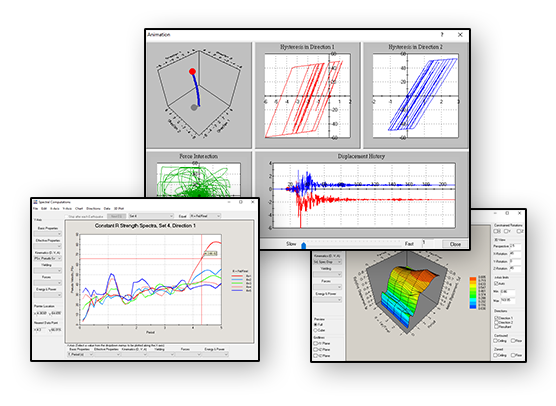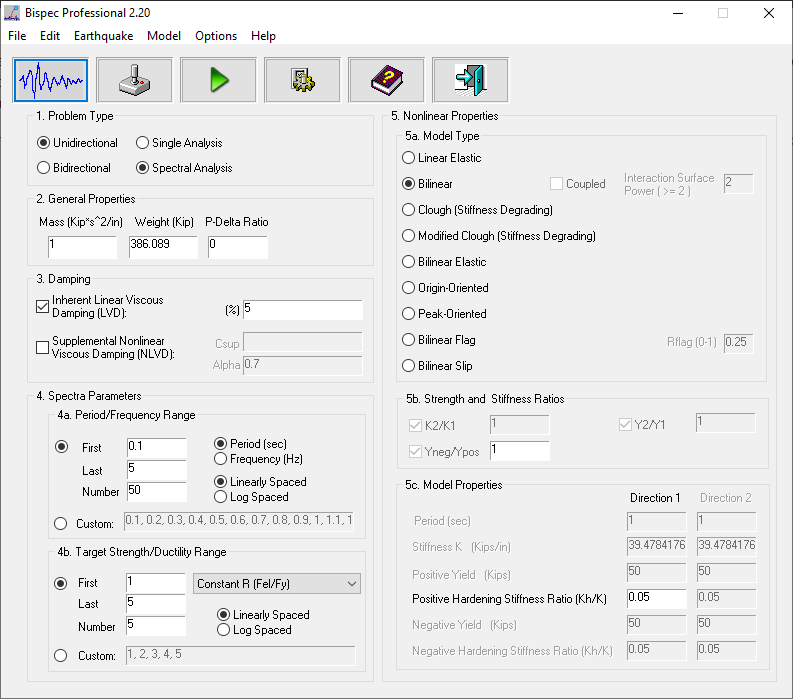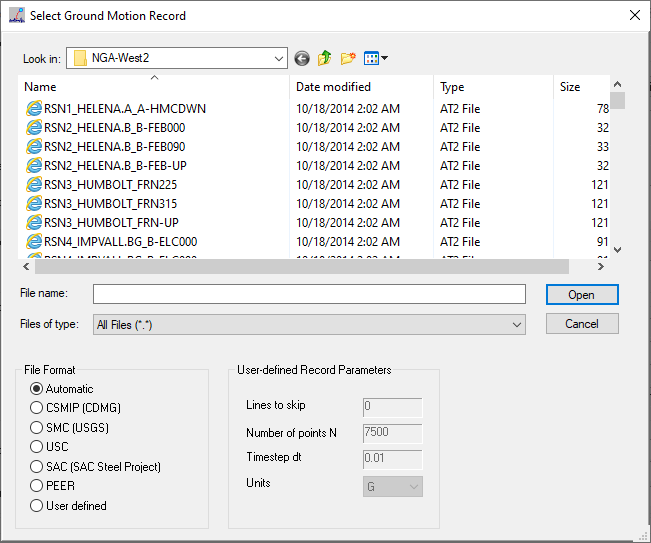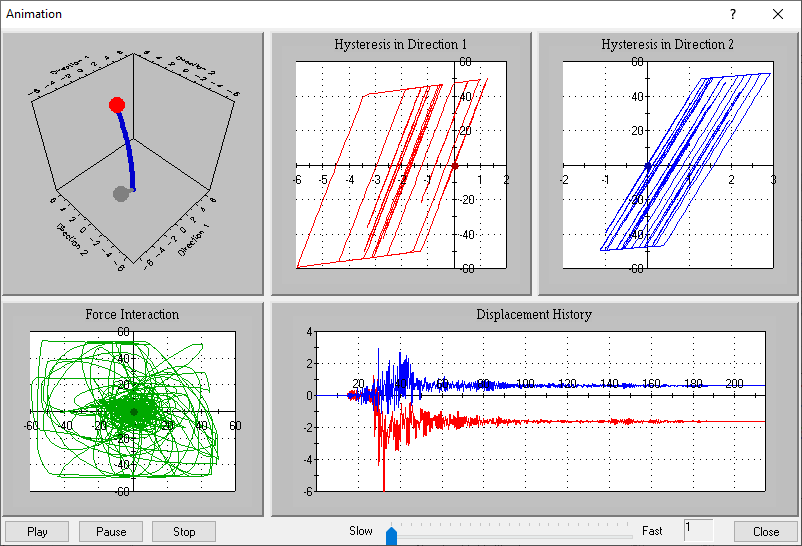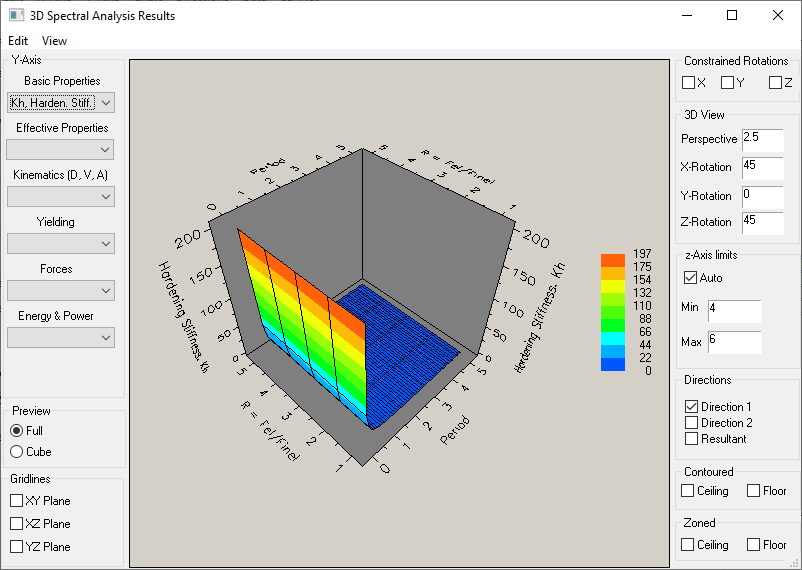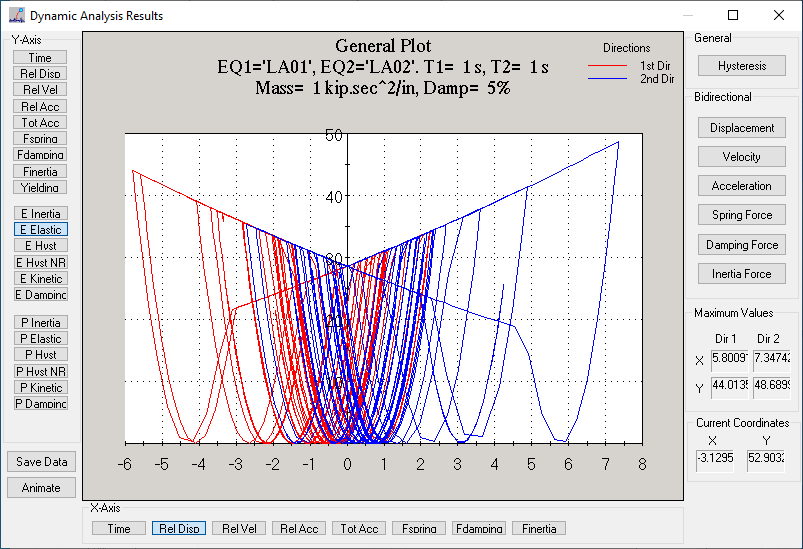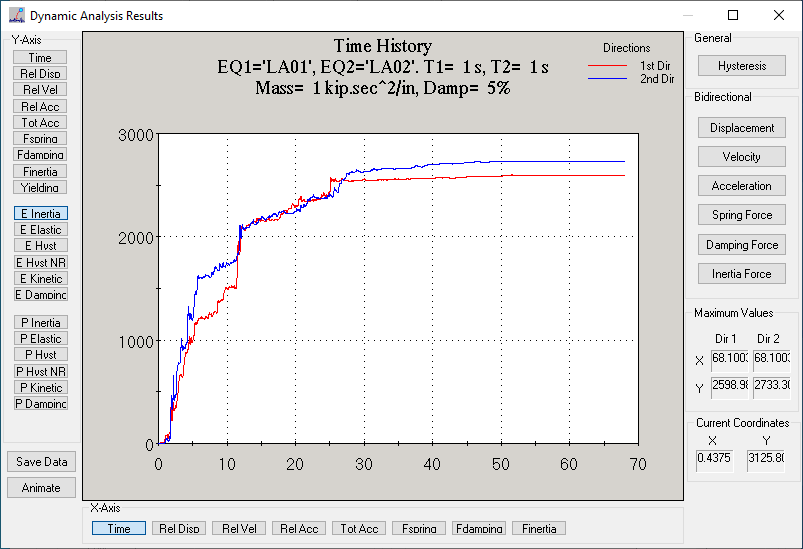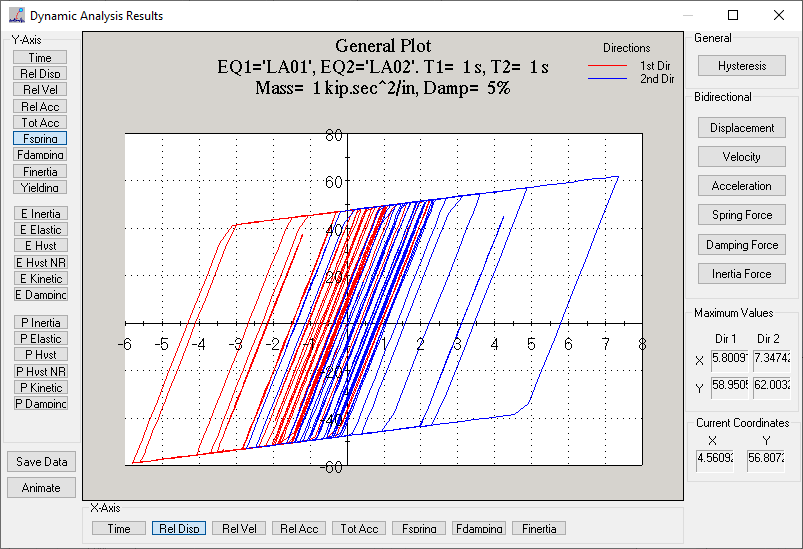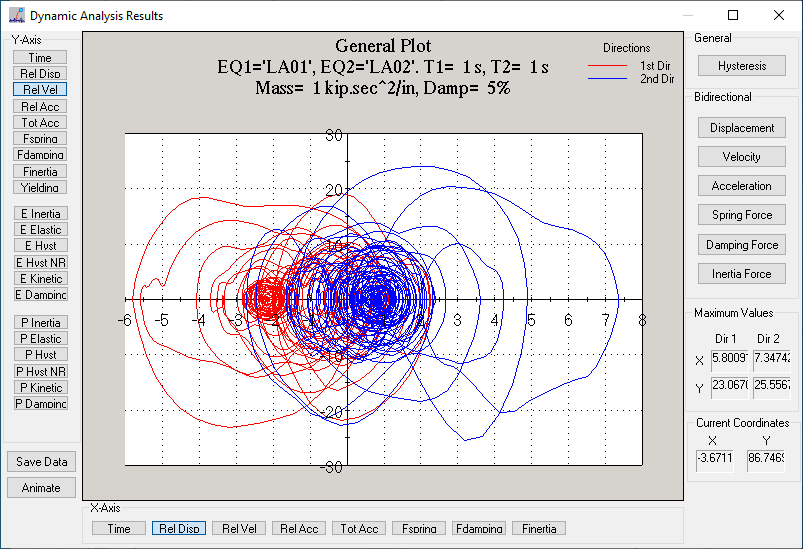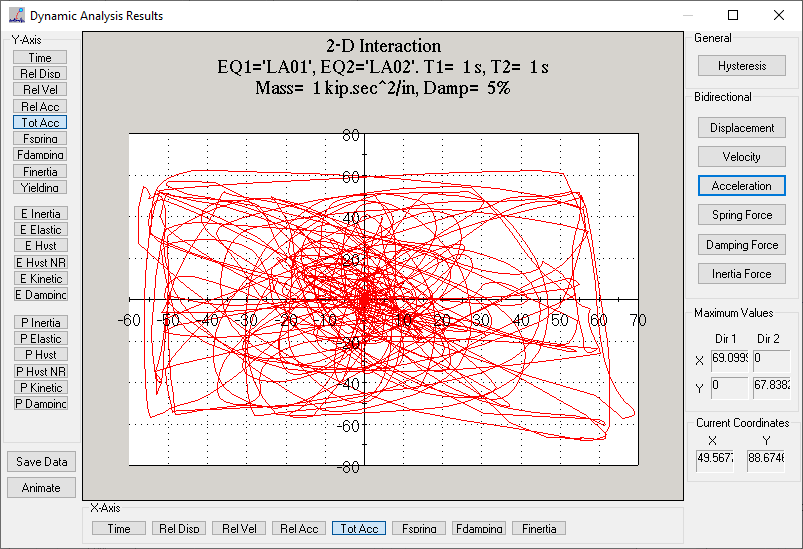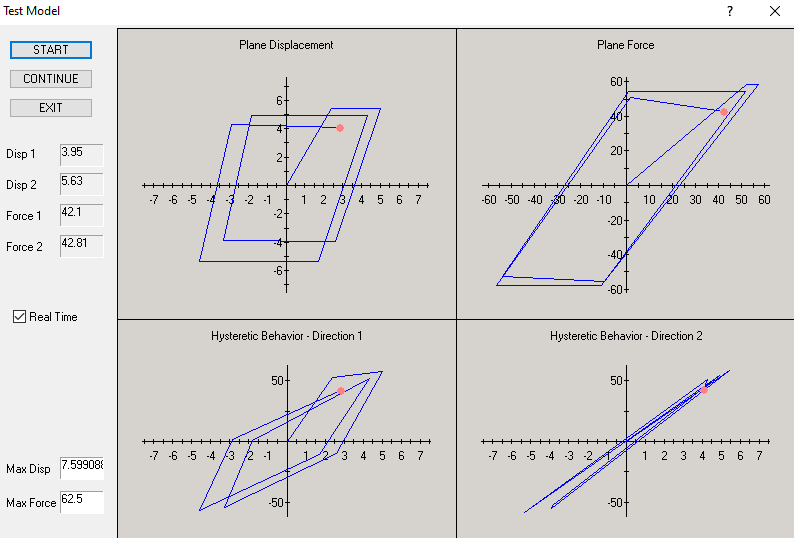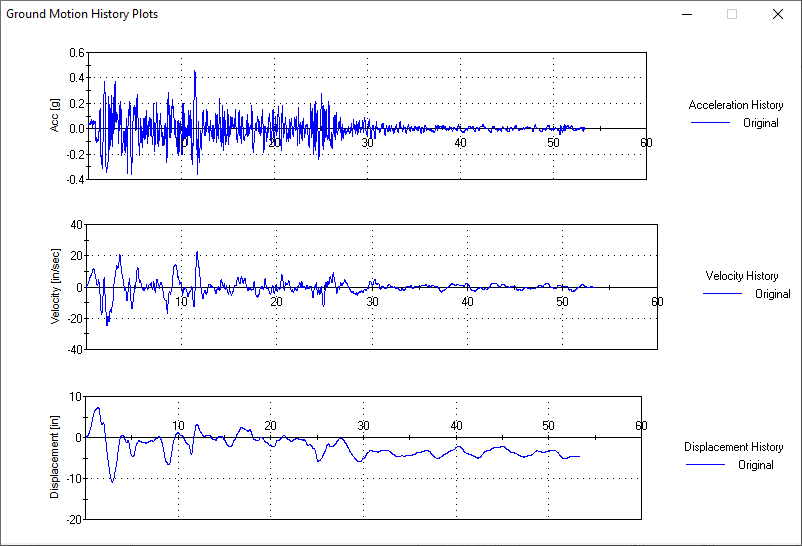Bispec can be used to calculate linear and nonlinear spectra including "Constant Strength", "Constant Ductility" and "Constant Damage" Nonlinear spectra.
It can be used by Engineers, Students and Researchers to:
- Calculate response spectra of design ground motions.
- Investigate the sensitivity of structural response to structural properties such as strength, stiffness, and shape of the force-displacement hysteretic curve.
- Perform parametric analyses of large numbers of ground motion records.
- Learn about dynamic behavior.
Bispec supports 7 different ground motion formats, 10 different hysteretic element models, and more than 60 different spectral values. It provides powerful visualization and plotting tools and allows all data to be exported for further analysis.
Main Features
Perform 1D & 2D dynamic analysis
Calculate Linear Spectra
Calculate 5 types of nonlinear spectra
10 different linear and nonlinear hysteretic models
Over 60 different spectral quantities
Linear and Nonlinear viscous damping
Why Use bispec?
Easy calculation of Linear and Nonlinear Spectra
Multiple nonlinear hysteretic models: Represent multiple types of structures
Easy Parametric Analysis: Amazing Power for Engineering, Educational and Research Work
Powerful Data Analysis and Export: Visualize data using 2D and 3D Plots and Export all data
Order Bispec
Bispec 2 Professional Standalone
- Includes 1-year support and upgrade-protection (SUP)
Bispec 2 Professional Network
- Includes 1-year support and upgrade-protection (SUP)
Bispec 2 Advanced Standalone
- Includes 1-year support and upgrade-protection (SUP)
Bispec 2 Advanced Network
- Includes 1-year support and upgrade-protection (SUP)
Note: Annual support subscription (SUP) is required after year 1.
Buy Additional Support
Bispec 2 Professional Standalone
1-year SUP
Bispec 2 Professional Network
1-year SUP
Bispec 2 Advanced Standalone
1-year SUP
Bispec 2 Advanced Network
1-year SUP
Buy Network Hardware Key
NETWORK Hardware Key
- Includes shipping and handling
Bispec 2 Professional Standalone
- Includes 1-year support and upgrade-protection (SUP)
Bispec 2 Professional Network
- Includes 1-year support and upgrade-protection (SUP)
Bispec 2 Student Edition
20-seat Lab Package (Network)- Includes 1-year support and upgrade-protection (SUP)
Bispec 2 Advanced Standalone
- Includes 1-year support and upgrade-protection (SUP)
Bispec 2 Advanced Network
- Includes 1-year support and upgrade-protection (SUP)
Note: Annual support subscription (SUP) is required after year 1.
Buy Additional Support
Bispec 2 Professional Standalone
1-year SUP
Bispec 2 Professional Network
1-year SUP
Bispec 2 Student Edition
1-year SUP
- 20-seat Lab Package (Network)
Bispec 2 Advanced Standalone
1-year SUP
Bispec 2 Advanced Network
1-year SUP
Bispec's features
Bispec is a nonlinear spectral analysis software program that performs unidirectional and bidirectional dynamic time-history analysis of a simple dynamic system under earthquake ground motion records. It can also compute several types of Nonlinear Spectra including Constant-Strength, Constant-Ductility and Constant-Damage spectra.
Here are some of Bispec's features:
- Perform a single dynamic analysis of one system
- Generate ground motion spectra (through a series of single dynamic analyses)
- Generate "Linear Spectra" which are used for seismic design
- Generate 5 types of nonlinear spectra (Constant strength, constant normalized strength, constant R, constant ductility, constant damage index)
- 10 different linear and nonlinear hysteretic models that model realistic nonlinear beahvior, for investigating various types of structural behavior
- Computes over 60 different spectral quantities
- Linear viscous damping, and nonlinear viscous damping, ideal for analyzing structures with supplemental damping
- Computation of effective period, stiffness, and several measure of equivalent effective damping (hysteretic, linear and nonlinear viscous damping, total damping)
- Fast analysis of base-isolated structures
- A unique feature of Bispec is the ability to generate "Bidirectional Spectra", by analyzing the motion in two directions and reporting the maximum resultant or maximum rotated response (also called MaxRot or RotD100). Bispec can also calculate the angle of maximum response, as well as bidirectional SRSS and Geometric mean (Geomean) response
- Compute spectra for multiple ground motion records for convenience or for performing parametric studies
- Extremely fast with many productivity features, which helps the user save hours of work
- Even faster now with Parallel processing support: Running spectral analysis in Bispec is now even much faster with support for multiple processors and multiple cores. For example, with two quad-core processors, spectral analysis can run close to 8 times faster, which can be paritcularly useful when analyzing multiple ground motions
Time History Analysis Features
- Unidirectional and bidirectional dynamic time history analysis
- Plotting of all computed quantities (displacement, velocity, acceleration, forces, energy, power, and others...)
- Linear and nonlinear models both for single dynamic analysis and spectral analysis
- All results can be exported to text files for further processing
- 3D Animation of unidirectional and bidirectional response

Spectral Analysis Features
- Unidirectional and bidirectional spectra
- Types of nonlinear spectra: Constant Ductility, Constant Strength (Normalized or Absolute), Constant R (Felastic/Fy) and Constant Damage Index
- Nonlinear Spectra can have two different variables:
- Period (frequency), and
- Strength, ductility or damage index
- Spectra can be computed for any number of earthquake records. Spectra are then plotted for an individual record or statistics for all records can be shown (mean, standard deviation, ...)
- Spectra can be plotted in 2D charts, in which any quantity can be shown on either the x-axis or y-axis
- Spectra with two variables can also be shown in 3D charts (for example Spectral Displacement Vs. Period and Strength)
- Point-click feature of the spectra plot. Click any point on any spectra, and see the time history response corresponding to that point in a separate window
- All results can be exported to text files for further processing
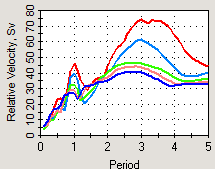
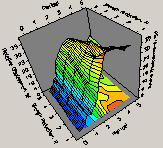
Force-Deformation Hysteretic Models

The following is the list of 10 hysteretic models available in Bispec. They can be used to model a wide range of structural behavior. See more details on the Nonlinear Hysteretic Models page.
- Linear Elastic Model
- Bilinear Plastic Model
- Clough Bilinear Stiffness Degrading Model
- Modified Clough Bilinear Stiffness Degrading Model
- Origin-Oriented Bilinear Model
- Peak-Oriented Bilinear Model
- Bilinear Elastic Model
- Bilinear Flag Model
- Bilinear Slip Model
- Bilinear Plasticity Model with Bidirectional Coupling
Earthquake Ground Motion Data Formats
- Import from several different earthquake data formats (SAC, PEER/NGA, SMC/USGS, CSMIP/CDMG and USC) or use a User-defined format option. An automatic feature allows files having one of the formats listed above to be imported without having to specify the format.
- Define a group of ground motions (unlimited number) for spectral analysis. The group can be saved for later use.
- Plot the acceleration time history of the record, as well as the integrated velocity and displacement records
- Modify the records by scaling their magnitude, or changing the timestep or duration
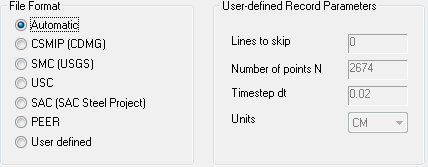
Overview of Nonlinear Hysteretic Models in Bispec
Different element models can be used to characterize the hysteretic behavior of the system.
There are 10 different elements that are currently available in Bispec:
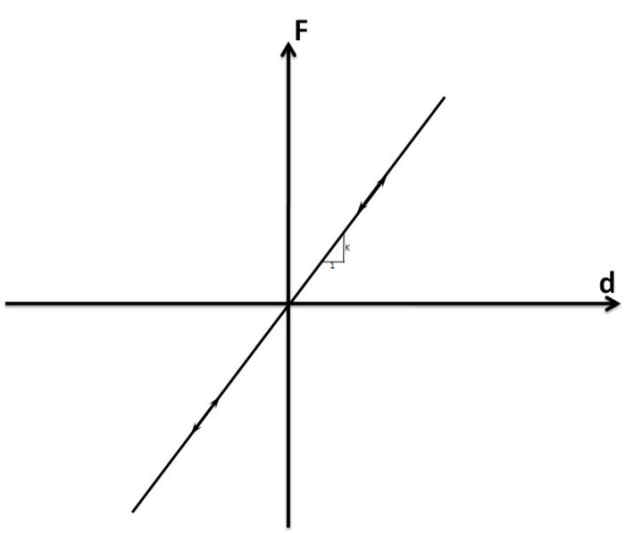
1. Elastic Linear Model
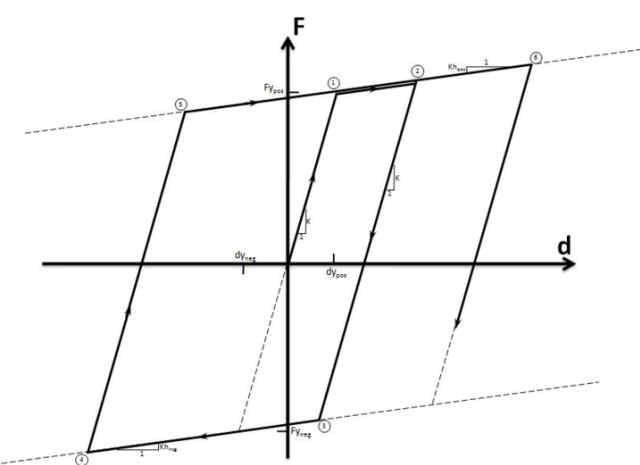
2. Bilinear Model with Hardening
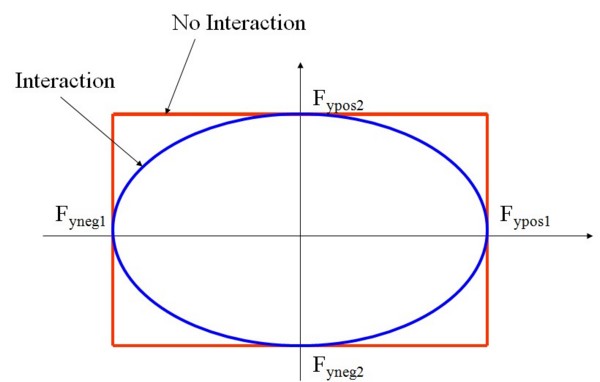
3. Bilinear Model with Bidirectional Interaction

4. Clough Bilinear Stiffness Degrading Model

5. Modified Clough Bilinear Stiffness Degrading Model

6. Bilinear Origin-Oriented Model

7. Bilinear Peak-Oriented Model
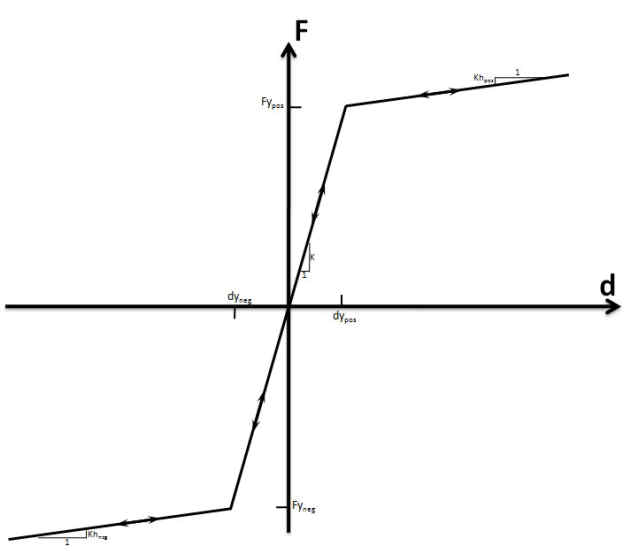
8. Bilinear Elastic Model
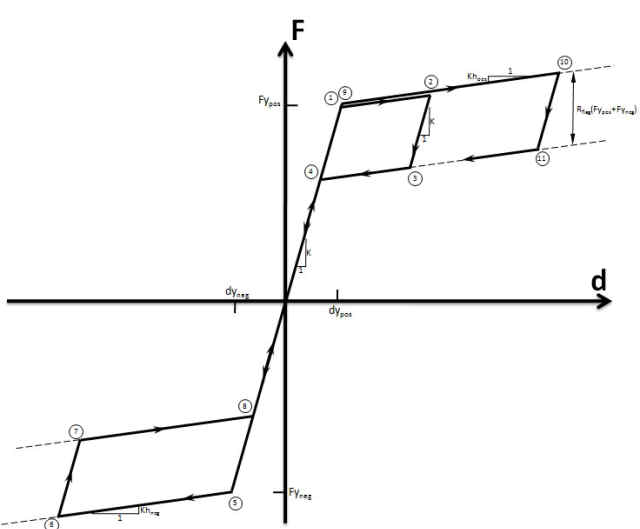
9. Bilinear Flag Model

10. Bilinear Slip Model
Bispec Spectral Quantities
Bispec computes a large number of spectral quantities that can be plotted and examined in the Spectral Analysis dialog. They can also be exported to text files for further analysis.
In the spectral analysis window, different spectral values can be selected for plotting along the horizontal or vertical axis. This allows any two spectral quantities to be plotted against each other providing a high degree of freedom for the user to explore alternative data plotting and interpretation forms.
In addition to computed spectral quantities, some of the basic input properties can also be plotted such as period, mass and stiffness. This allows for example plotting any quantity vs. period (T) or stiffness (K).
In general, the available quantities are divided into 5 separate groups of related quantities:
-
Basic Properties: Period (T), frequency (f), Stiffness (K), Damping Ratio (z ), Mass (M), Hardening Stiffness (Kh), Hardening Stiffness Ratio (Kh/K), Post-yield period (Tsec), P-Delta ratio (P/KL), Damping Coefficient (C), Nonlinear Damping Coefficient (Csup), and nonlinear damping exponent (alpha).
-
Effective Properties: Effective Period (Teff), Effective Frequency (feff), Effective Stiffness (Keff), Effective Linear Viscous Damping (bIeff), Effective Nonlinear Viscous Damping (bVeff), Total Effective Viscous Damping (bV+Ieff), Effective Hysteretic Damping (bHeff), and Total Effective Damping (bTot_eff).
-
Kinematics (D, V, A): Sd, Sv, Sar, Sat, PSv, PSa, Dres, Dres/dy, Dres/Sd.
-
Yielding related quantities: Dyp, Dyn, Gamma (Dinel/Del), Ductility, Pos Ductility, Neg Ductility, YE (Yield Events), Pos YE, Neg YE, Collapse.
-
Forces: Sfs, Sfd, Sfa, Fyp, Fyn, Cy (Fyp/W), R (Fel/Fyp), Cs (Sfs/W), Eta (Fyp/(M*PGA))
-
Energy and Power: EI, EK, EE, EH, EHnr, ED, PI, PK, PE, PH, PHnr, PD, and DI_BB (damage index).
The following table lists the 61 spectral quantities and sdof properties that are available for plotting in the spectral results dialog. Each quantity is listed with its symbol, description, dimensional form and physical units. Highlighted text indicates recent changes and additions to Bispec. See the Bispec Help Manual (installed with software) for more details.
|
Symbol |
Description |
Physical Units |
Unit |
|
Basic Properties |
|||
|
T |
Period |
T |
s |
|
f |
Frequency |
F |
Hz |
|
K |
Stiffness |
F/L |
Kip/in |
|
Damping % |
Damping |
- |
% |
|
M |
Mass |
M |
Kip*s2/in |
|
Kh |
Hardening Stiffness |
F/L |
Kip/in |
|
Kh/K |
Hardening Stiffness Ratio |
- |
- |
|
Tsec |
Post-yield period, corresponding to Kh |
T |
s |
|
P-Delta ratio |
P-Delta Ratio = P/KL , (where L is the effective height) |
- |
- |
|
C |
Damping Coefficient for Linear Viscous Damping (LVD) |
F.t/L |
Kip.s/in |
|
Csup |
Damping Coefficient for Nonlinear Viscous Damping (NLVD) |
F.(t/L)α |
Kip.(s/in)α |
|
Alpha (α) |
Exponent coefficient for Nonlinear Viscoud Damping (NLVD) |
- |
- |
|
Effective Properties |
|||
|
Teff |
Effective Period |
T |
s |
|
feff |
Effective Frequency |
F |
Hz |
|
Keff |
Effective Stiffness |
F/L |
Kip/in |
|
βIeff % |
Effective Inherent (Linear) Viscous Damping (LVD) |
- |
% |
|
βVeff % |
Effective Supplemental (Nonlinear) Viscous Damping (LVD) |
- |
% |
|
βV+Ieff % |
Total Effective Viscous Damping (LVD+NLVD) |
- |
% |
|
βHeff % |
Effective Hysteretic Damping |
- |
% |
|
βTot_eff % |
Total Effective Damping (Hysteretic + Viscous) |
- |
% |
|
Kinematics (D, V, A) |
|||
|
Sd |
Spectral Displacement |
L |
in |
|
Sv |
Spectral Velocity |
L/t |
in/s |
|
Sar |
Spectral Acceleration (Relative) |
L/t 2 |
in/s 2 |
|
Sat |
Spectral Acceleration (Absolute) |
L/t 2 |
in/s 2 |
|
PSv |
Pseudo-Spectral Velocity = Sd*(2 π /T) |
L/t |
in/s |
|
PSa |
Pseudo-Spectral Acceleration = Sd*(2 π /T) 2 |
L/t 2 |
in/s 2 |
|
Dres |
Residual Displacement at end of record (Absolute) |
L |
in |
|
Dres/Dyp |
Residual ductility |
- |
- |
|
Dres/Sd |
Dres/Sd ratio |
- |
- |
|
Yielding |
|||
|
Dyp |
Positive yield displacement |
L |
in |
|
Dyn |
Negative yield displacement (Signed) |
L |
in |
|
Gamma (γ) |
Dinel/Del: Ratio of inelastic Sd to elastic Sd |
- |
- |
|
Ductility |
Peak Ratio inelastic displacement to yield displacement,
|
- |
- |
|
Pos Ductility |
Positive Ductility (Dmax/Dyp) |
- |
- |
|
Neg Ductility |
Negative Ductility (Dmin/Dyn) |
- |
- |
|
YE |
Number of yielding events |
- |
- |
|
Pos YE |
Number of positive yield events |
- |
- |
|
Neg YE |
Number of negative yield events |
- |
- |
|
Collapse |
Collapse indicator (1: Collapse, 0: No Collapse) |
- |
- |
|
Forces |
|||
|
Sfs |
Hysteretic Force = max(fs) |
F |
Kip |
|
Sfd |
Damping Force = max(fd) |
F |
Kip |
|
Sfa |
Inertia Force = M*Sat, also equal to max(fs+fd) |
F |
Kip |
|
Fyp |
Positive yield force |
F |
Kip |
|
Fyn |
Negative yield force, (Signed) |
F |
Kip |
|
Cy (Fyp/W) |
Normalized Yield Capacity |
- |
- |
|
R |
Fel/Fyp: Ratio of elastic Sfs to Fyp |
- |
- |
|
Cs (Sfs/W) |
Normalized Peak Force |
- |
- |
|
Eta (η) |
Normalized yield strength = Fyp/(M*PGA) |
- |
- |
|
Energy & Power |
|||
|
EI |
Input Energy |
F.L |
Kip.in |
|
EK |
Kinetic Energy |
F.L |
Kip.in |
|
EE |
Elastic Energy |
F.L |
Kip.in |
|
EH |
Hysteretic Energy |
F.L |
Kip.in |
|
EHnr |
Hysteretic Non-Recoverable Energy |
F.L |
Kip.in |
|
ED |
Damping Energy |
F.L |
Kip.in |
|
PI |
Input Power |
F.L/t |
Kip.in/s |
|
PK |
Kinetic Power |
F.L/t |
Kip.in/s |
|
PE |
Elastic Power |
F.L/t |
Kip.in/s |
|
PH |
Hysteretic Power |
F.L/t |
Kip.in/s |
|
PHnr |
Hysteretic Non-Recoverable Power |
F.L/t |
Kip.in/s |
|
PD |
Damping Power |
F.L/t |
Kip.in/s |
|
DI_BB |
Damage index (Bozorgnia and Bertero) |
- |
- |
Bispec Feature Comparison by Edition
Bispec is available in three different editions: Standard, Professional, and Advanced. Please see the description below for the various features supported by each edition.
|
|
Bispec Student |
Bispec Professional |
Bispec Advanced |
|
Open/Save Functionality |
Yes |
Yes |
Yes |
|
Single Dynamic Analysis |
Yes |
Yes |
Yes |
|
Linear Spectra |
Yes |
Yes |
Yes |
|
Nonlinear Spectra |
Yes |
Yes |
Yes |
|
Maximum Number of Records in Spectral Analysis |
7 |
100 |
Unlimited* |
|
Number of Available Hysteretic Models |
6 |
10 |
10 |
|
Supported Hysteretic Models |
1. Linear 2. Bilnear 3. 2D Bilinear Coupled 4. Clough 5. Modified Clough 6. Bilinear Elastic |
1. Linear 2. Bilnear 3. 2D Bilinear Coupled 4. Clough 5. Modified Clough 6. Bilinear Elastic 7. Origin-Oriented
8. Peak-Oriented
9. Bilinear Flag
10. Bilinear Slip
|
1. Linear 2. Bilnear 3. 2D Bilinear Coupled 4. Clough 5. Modified Clough 6. Bilinear Elastic 7. Origin-Oriented8. Peak-Oriented 9. Bilinear Flag 10. Bilinear Slip |
|
Parallel Processing Number of Processors |
4 |
8 |
Unlimited* |
|
Parametric Analysis Capability |
Good |
Better |
Excellent |
|
Export Resutls for Processing |
Yes |
Yes |
Yes |
|
Ground Motion Formats |
7 |
7 |
7 |
|
Export of Results to Text File |
Yes |
Yes |
Yes |
| Export all spectral analysis results to a single file (database-like format) | No | No | Yes |
|
Constant Strength Spectra |
Yes |
Yes |
Yes |
|
Constant Normalized Strength Spectra |
Yes |
Yes |
Yes |
|
Constant R Spectra |
Yes |
Yes |
Yes |
|
Constant Ductility Spectra |
Yes |
Yes |
Yes |
|
Constant Damage Spectra |
Yes |
Yes |
Yes |
|
Bidirectional Spectra (Maximum Rotated Spectra) -Compute Resultant -Compute Resultant Angle -Compute SRSS -Compute Geomean |
Yes Yes No No |
Yes Yes No No |
Yes Yes Yes Yes |
|
Supported Spectral Quantities |
61 |
61 |
61 |
|
|
|
|
|
|
Interactive Hysteretic Model Testing |
5 |
10 |
10 |
|
P-Delta Effects |
Yes |
Yes |
Yes |
|
2D & 3D Dispaly of Spectral Results |
Yes |
Yes |
Yes |
|
Animation of Dynamic Analysis Results |
Yes |
Yes |
Yes |
|
New Detailed Help Documentation |
Yes |
Yes |
Yes |


